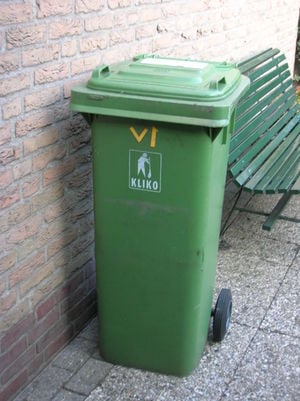
Biodegradable waste is a type of waste, typically originating from plant or animal sources, which may be degraded by other living organisms. Waste that cannot be broken down by other living organisms are called non-biodegradable.[1]
Biodegradable waste can be commonly found in municipal solid waste (sometimes called biodegradable municipal waste, or BMW) as green waste, food waste, paper waste, and biodegradable plastics. Other biodegradable wastes include human waste, manure, sewage, slaughterhouse waste. In the absence of oxygen much of this waste will decay to methane by anaerobic digestion.[2]
Climate change impacts[edit | edit source]
The main environmental threat from biodegradable waste is the production of methane in landfills. Methane is 21 times as potent a greenhouse gas as carbon dioxide and accounted for some 3% of total greenhouse gas emissions in the EU-15 in 1995. The Landfill Directive 1999/31/EC obliges Member States to reduce the amount of biodegradable waste that they landfill to 35% of 1995 levels by 2016, which will significantly reduce the problem.[3]l
Uses of biodegradable waste[edit | edit source]
Biodegradable waste can often be used for composting which turns the waste into humus. It can also be used as a resource for heat, electricity and fuel in future, by using anaerobic digestion[4] as it is being achieved by the swiss Kompogas treatment for 20 years now. This produces additional Biogas and still delivers usable nutrients that can be implemented to the soil.[5] Especially animal-based kitchen scraps (such as leftover fish, meat), ... are best disposed this way (as these are best not composted). Finally note that leftover human food (vegetables, ... -no animal flesh-) can also be used as fodder to flightless birds, goats, pigs, sheep, ... or alternatively can be fed to birds, and other wildlife.
In the USA, approximately 50% of waste sent to landfills or incinerators is biodegradable; therefore, composting could create many new jobs, and recover significant resources that are being lost.[6]
References[edit | edit source]
See also[edit | edit source]
- Recycling organic waste (original)